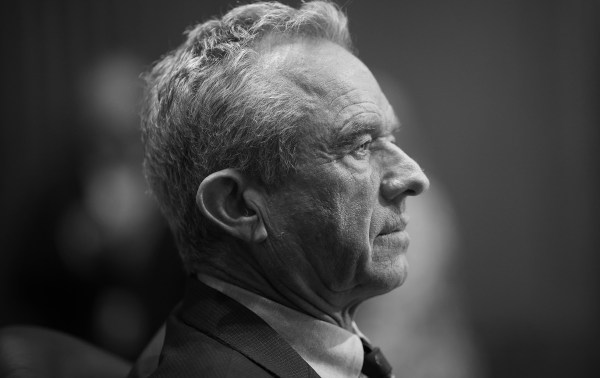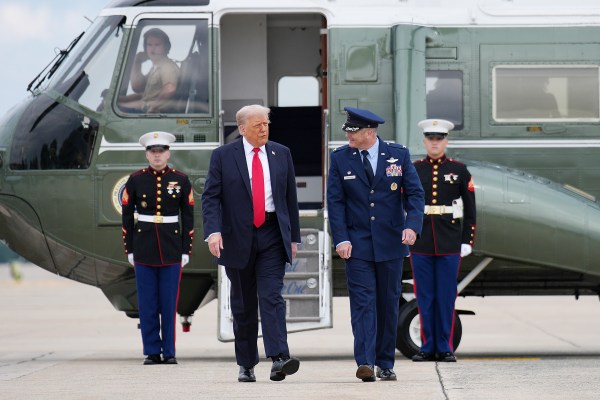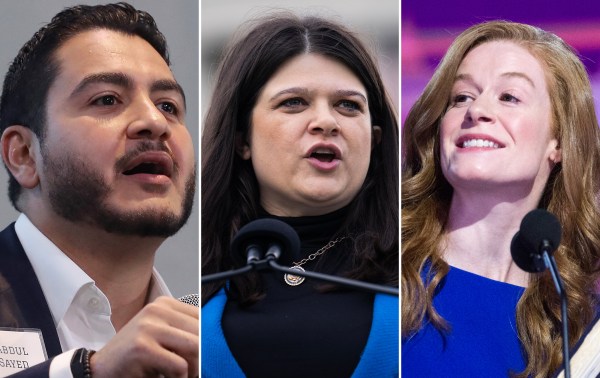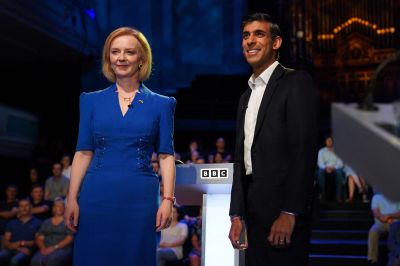The British Conservative Party will have been in power for 15 years by the next U.K. general election. Yet it is struggling to craft a message that resonates with the British public—and to get party members themselves to agree on what they stand for.
The U.K. has actually had three different prime ministers since September—all of them Conservative Party members.
There’s Boris Johnson, who came to power in 2019 and promised to “Get Brexit Done.” The U.K. did officially leave the European Union in 2020, but Johnson faced countless scandals during his time in power. Most notably he was accused of violating his own government’s COVID-19 lockdown rules to hold parties with his staff.
These scandals led to more than 50 members of Johnson’s party quitting their cabinet positions in protest of his leadership. He eventually resigned, paving the way for a leadership contest between Liz Truss, his former foreign secretary, and Rishi Sunak, his former chancellor of the exchequer and head of the British treasury.
Truss got her chance first after winning a majority of votes from paying Conservative Party members—the only people allowed to choose the replacement for Boris Johnson. In her first address as prime minister, Truss emphasized that “growth, growth, and growth” were her top priorities for the British economy.
Truss quickly rolled out a so-called “mini-budget” that would have included the U.K.’s biggest tax cuts since 1972. Forty-five billion pounds of lost revenue were to be financed by increasing borrowing—a fact that caused markets to tank and the value of the pound to drop to its lowest level ever versus the dollar.
A lot of British voters were also upset about whose taxes were actually being cut. One of the provisions in the first edition of the mini budget was a proposal to cut out the U.K.’s highest individual marginal tax rate—45 percent on incomes over 150,000 pounds. That one provision would have only cut taxes for only about 660,000 people and it was quickly rescinded. But brutal headlines like these dominated the news anyway.
As markets tanked, so did the value of the pound and so did Truss’s popularity. Within just six weeks of taking office, she had a whopping 80% disapproval rating, making her the most unpopular U.K. prime minister since the advent of modern polling.
When the new prime minister met King Charles for the first time, his reaction—”Back again, dear oh dear”—quickly went viral. And when Truss didn’t show up to a weekly meeting in the House of Commons, another viral clip emerged when a Conservative minister chose to directly deny an accusation that the prime minister was hiding under her desk.
By mid-October, Truss was so politically vulnerable that a British tabloid set up a livestream with a head of lettuce to see whether it would last longer than her remaining time in office. When Liz Truss resigned a week later—before the lettuce had a chance to wilt—she became the shortest serving prime minister in British history.
Sunak, runner up in the previous contest, is now prime minister, and he has claimed vindication for his warnings over the summer about borrowing to generate economic growth.
Yet Sunak is now the leader of a Conservative Party that is facing some of its worst polling numbers in years, and one that is deeply divided between different factions.
There’s a small-government, economically liberal group led by people like Liz Truss, who also support easing immigration rules to boost Britain’s economic growth.
There’s a strongly pro-Brexit group that pushed for the original referendum and liked Boris Johnson’s message of just getting it done. Johnson himself ran on a platform that was very comfortable with a strong British national identity and high levels of government spending. In fact, one of his biggest programs was a “Leveling Up” initiative that would go toward high speed trains and city infrastructure in north England. One U.K. think tank estimated this could cost up to 2 trillion pounds.
There’s also a wing of the Conservative Party that didn’t support Brexit to begin with—and might look favorably on opportunities to reintegrate the U.K. more closely into the European Union.
Robert Tyler, a senior policy advisor for New Direction, a free market think tank originally founded by Margaret Thatcher, likens the factional disputes within the Conservative Party to those in the U.S. Republican Party.
“Both the Conservative Party and the Republican Party share a trait in that they are big churches,” he explains. “What you end up with is coalitions of different factions at different times. Under David Cameron, you effectively had what we call one-nation conservatism—this is the old school, statist version of conservatism, allied with liberal conservatism, and on the outside were traditionalists. Then comes Theresa May, who in many ways is a traditional conservative married to the one-nation conservatism, with the liberals on the outside. And then you get Boris who comes in with the liberals, one-nation, and the traditionalists. You have all these different building blocks and they’re put together in different patterns and different organizational structures.”
The Conservative Party’s reliance on coalition building has meant that different consecutive Conservative Party prime ministers have taken basically opposite positions on the U.K.’s biggest issues—most notably, Brexit.
David Cameron, who originally called for the Brexit referendum in the first place, actually wanted Britain to stay in the EU, and he resigned after Leave won the campaign. Theresa May, who came after him, also originally supported Remain, and her difficulty in trying to negotiate an exit deal was the fodder for comedians.
After Theresa May came Boris Johnson, who said he was willing to pull the U.K. out of the EU without any kind of deal, which would have had big effects on the British economy and the U.K.’s ability to cooperate with the EU on security issues. But even Johnson’s position on Brexit wasn’t always rock solid. During the referendum in 2016, he reportedly drafted two op-eds—one in favor of Leave but the other backing Remain.
The fact that leaders of the Conservative Party have taken almost every possible position on Brexit might sound incoherent, but for John Gustavsson, a former policy advisor in the European Parliament (and a Euroskeptic himself), those changing positions are reflective of broader trends in British democracy.
“The British Conservative Party respects democracy,” Gustavsson maintains. “They have a great respect for the British people. So even if they do something the Conservatives disagree with, they’re still going to carry it out. In the same way, if there were a second referendum, and the U.K. voted to rejoin, the Conservatives would respect that.”
Changing—or hard-to-identify—positions on political issues are not a phenomenon unique to the Conservative Party. Jeremy Corbyn, the former leader of the rival Labour Party, was originally a strong Euroskeptic himself, and his unwillingness to come out forcefully in favor of Remain during the Brexit referendum was something that frustrated many of his colleagues. Still, Conservative Party critics see its changing positions as a symptom of a broader problem. One of those critics is Hermann Kelly, a social conservative and a Euroskeptic from Ireland, who founded the rightwing Irish Freedom Party.
“It [the Conservative Party] seems to be all at sea to be honest,” he says. “The Tory MPs who are in there seem completely without principle. They judge policy—and prime ministers—by popularity rather than any principle that they have or any goal they seek to achieve. It would make the public very cynical—is that their end? To keep their backsides on the green benches of Westminster? Or are they a party of principle?”
Under Rishi Sunak, the Conservative Party is going to have to work hard to figure out what issues it stands for, but there are some things—like strong support for Ukraine—that do unify just about all members of the party. As for Sunak himself, the prime minister has an interesting blend of some of the different Conservative Party positions. He supports Brexit; he has pushed for tough-on-crime measures and increased police funding, and he implemented many of Boris Johnson’s expensive COVID-19 spending policies, such as furlough schemes and eating out initiatives to help struggling restaurants.
The challenge for Sunak going forward will be figuring out how he can get enough support in his party to actually get his proposals done. Otherwise, the lettuce might be ready for round two.






Please note that we at The Dispatch hold ourselves, our work, and our commenters to a higher standard than other places on the internet. We welcome comments that foster genuine debate or discussion—including comments critical of us or our work—but responses that include ad hominem attacks on fellow Dispatch members or are intended to stoke fear and anger may be moderated.
With your membership, you only have the ability to comment on The Morning Dispatch articles. Consider upgrading to join the conversation everywhere.